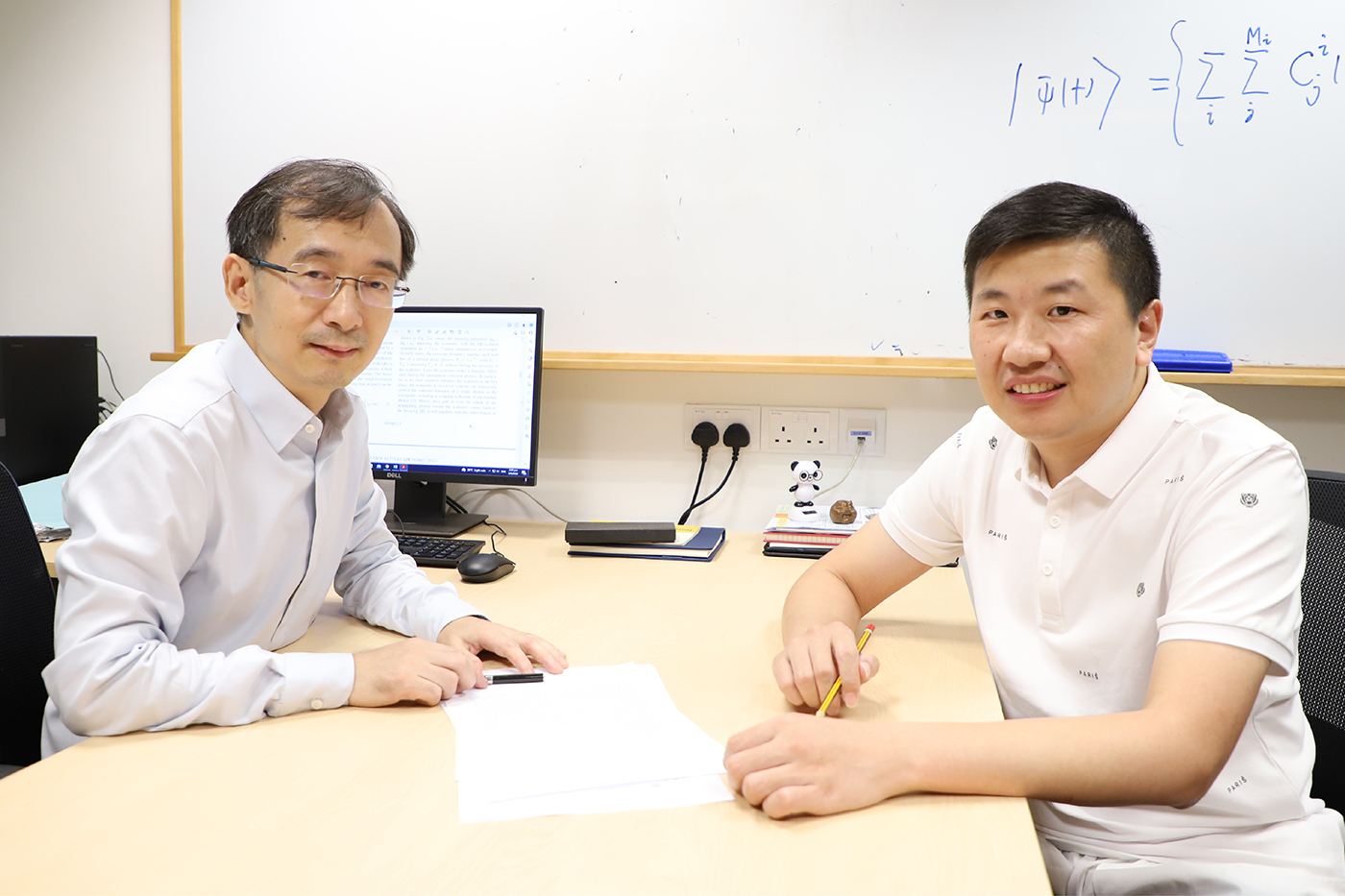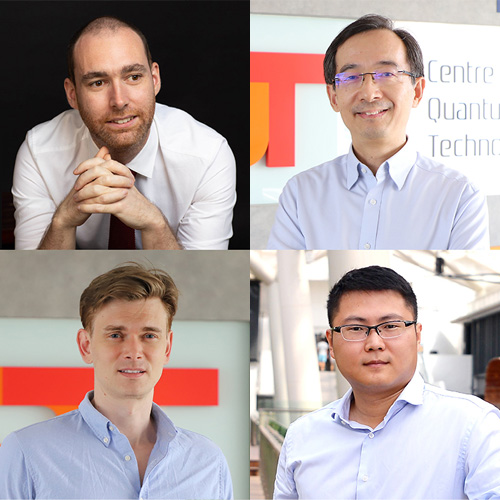Highlights
Researchers discover new means to manipulate light emission
 By considering how a photon can interfere with its own emission from an atom, CQT Principal Investigator Gong Jiangbin (left) and NUS Department of Physics Research Fellow Qiao Lei (right) have proposed a new scheme to manipulate light emission.
By considering how a photon can interfere with its own emission from an atom, CQT Principal Investigator Gong Jiangbin (left) and NUS Department of Physics Research Fellow Qiao Lei (right) have proposed a new scheme to manipulate light emission.
Making a light particle interfere with its own emission can invoke a novel phenomenon of hyperradiance. That’s according to calculations by CQT Principal Investigator Gong Jiangbin and NUS Department of Physics Research Fellow Qiao Lei published in Physical Review Letters on 24 August.
Besides helping physicists develop a more fundamental understanding of spontaneous light emissions, the work could have implications for the reading and storing of quantum information.
“Photons are extremely important as they are the main carriers of information, such as in quantum key distribution,” says Jiangbin. “Developing new understanding of photons, how they behave and interact, is always useful.”
Enhanced effects
In the researchers’ scheme, a photon emitted by some quantum system – for example an atom in a cavity or a superconducting qubit, when they decay from an excited state – is reflected back on itself to its source. Before measurement, the photon is in a superposition of states, (i) not having been emitted and (ii) having been emitted, reflected and travelling back. These two propagation pathways interfere.
“Surprisingly, to our knowledge, no one has looked at this scenario where you let the photon come back and interfere with its own emission process,” says Jiangbin.
It is known that constructive or destructive interference can affect light emission from quantum emitters. In a phenomenon known as superradiance, light is emitted in a more intense pulse when there is a group of emitters and their emitted photons interfere constructively. Conversely, when the emitted photons interfere destructively, it leads to a phenomenon called subradiance which inhibits the decay of the excited states.
Based on their calculations, the researchers predict that self-interference by a returning photon can amplify both effects: either superradiance becomes hyperradiance, or superradiance is strongly suppressed to become a new form of subradiance.
Applying this trick to manipulate light emission could bring speed control in quantum information processing. Information encoded in a photon can only be read after that photon is emitted. Instead of waiting the natural lifetime of the emitter, inducing hyperradiance could offer a speed up, allowing photon signals to be read sooner. On the other hand, subradiance could increase the storage time of some useful information.
Quantum switches
A key point in the researchers’ scheme is controlling when there is constructive or destructive interference. This depends on the relative phase of the photon as it self-interferes, which is controlled by the distance travelled by the photon before reflection.
The researchers propose one way to realise this is with tuneable ‘switches’ placed at different distances along a waveguide. Imagine that the switches are made from coupled superconducting resonators with transmon qubits. The switches can then be tuned to reflect (or not to reflect) the incoming photon by tuning the energy difference between their ground and excited states through an applied magnetic field. The photon would only be reflected when the photon’s frequency matches the resonant frequency of the transmon qubits.
Jiangbin says, “I can actively choose which switch to activate, and therefore tune the distance the photon travels that affects whether the self-interference is constructive or destructive. This gives much more flexibility in control as compared to, for example, when the photon is reflected by the end of a cavity.”
The researchers think their scheme is already within reach of current experiments, and they hope experimental groups will be interested to try it. Their next step is to do calculations for more than one self-interfering photon at a time, which could reveal more physics.
Learn more
Related Stories
 | Meet a CQTian: Gong Jiangbin July 19 2022 |
 | CQT appoints four new Principal Investigators July 19 2022 |






